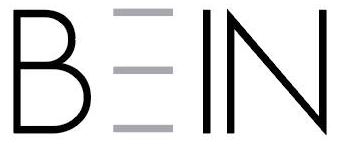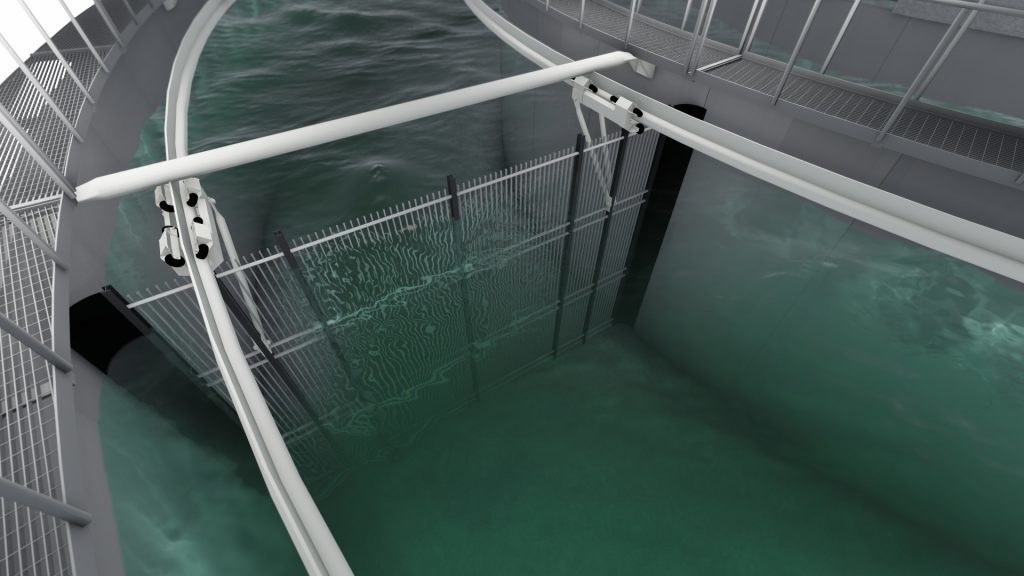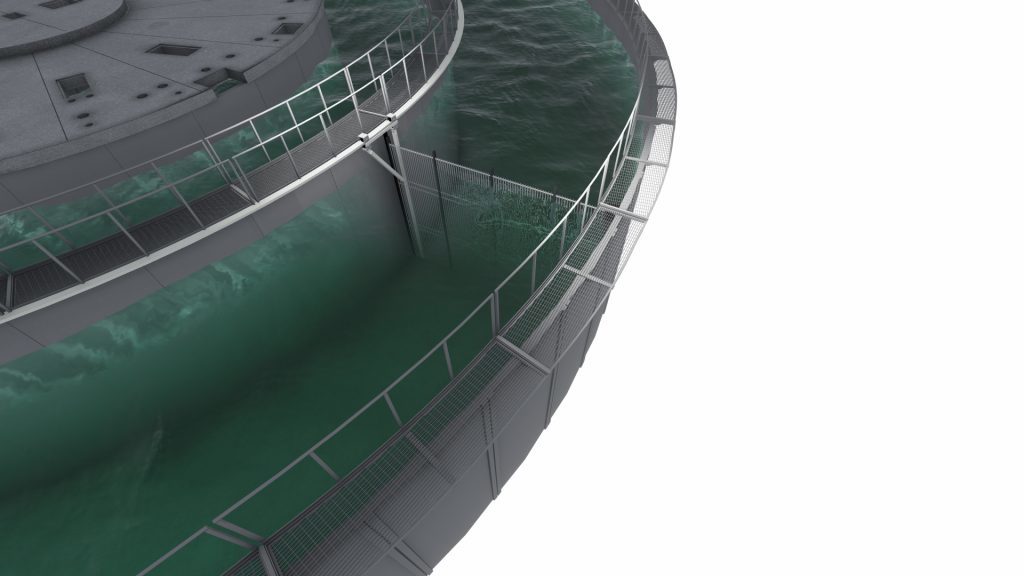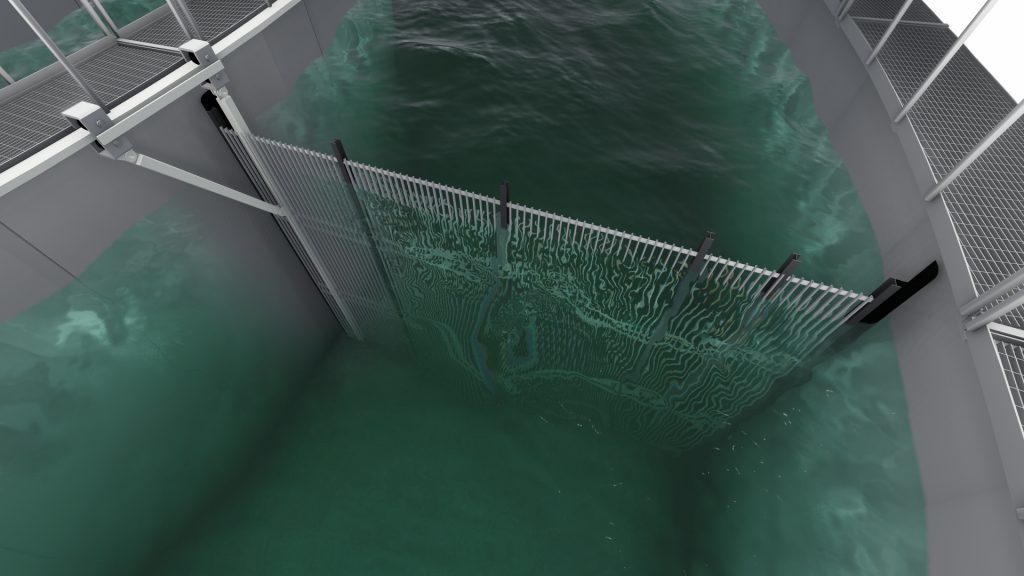SEPARATION GRIDS / SCREENS
Land-based RAS facilities for farming salmon from smolt to a size ready for harvesting, are becoming more widespread. In order to maintain traceability throughout the fish’s life cycle and to control the feeding amount, it is important to distinguish the fish by size. In land-based RAS plants, it is common to have circular basins where the water circulates at a given flow rate. This means the fish need to swim constantly up stream which improves the quality of the meat. Moreover, this flow rate also helps to purify and filter the water.
Separation grids are often installed in the circular basins to separate fish of different sizes from each other. These separation grids create individual chambers for each fish size. The average RAS facility typically consist of 8 and 12 chambers. The separation grids are often made of acid proof steel, composite materials or plastic. This depends of the size of the plant and the flow rate, which is decisive in the structural calculation of the separation grids.
As each fish grows, it will need more space. It is for this reason that many fish farmers have requested movable separation grids so that the space of each chamber can be adjusted to suit fish size and number. We have therefore developed separation grids that are mounted onto a motorized drive unit that can be run on rails along the walls of the pool.
Another advantage of using mobile separation grids is to do with the general logistics of fish farms. The smolts are often placed in the first chamber, while fish harvesting takes place in the last chamber of the RAS plant. When the smolts have grown sufficiently, they are moved over to the next chamber. One way to move the fish is by moving the separation grids in the first chamber closer together while opening a hatch in the second grid. This is a process known as crowding. The fish will then seek toward the open volume of chamber number two. When all the fish from chamber number one are displaced into the second chamber, the hatch of the separating grid number two is closed. Then the separate grid number one is run back so that a large volume is ready to accept a new supply of smolt. This process is repeated each time new smolt are introduced. After about a year, the fish from the first chamber will have reached the last chamber and grown big enough to harvest.
The hatches are often placed on one side of the separation grids. Therefore, it is not sufficient to just place the separation grids next to each other to ensure the fish displacement. In order to move all the fish to the next chamber, a certain piece of equipment is also needed to move the fish across the chamber. This is known as a crowder and can move like a wall along two separation grids.
Even though an RAS plant ensures good control over chemical composition of the water and feeding of the fish, there will be some mortality among the fish. It is important that the dead fish are removed before the decomposition process begins, releasing hydrogen sulfide into the water. The dead fish will flow with the current until the reach the separation grids. Some dead fish will end up on ground level while others will float to the top of the grids. These fish can easily be removed by a mechanical system that can be operated from the walkway above.
BEIN has done all the concept development, mechanical design, structural calculations, technical drawings and manufacturing of a complete system containing separation grids, drive units, a crowder and a dead fish removal system. As a result, we have acquired cutting-edge expertise in the development of mobile separation grids. We have now developed a concept for generation two, which will simplify the concept, reduce flow resistance and safeguard fish welfare even better.





